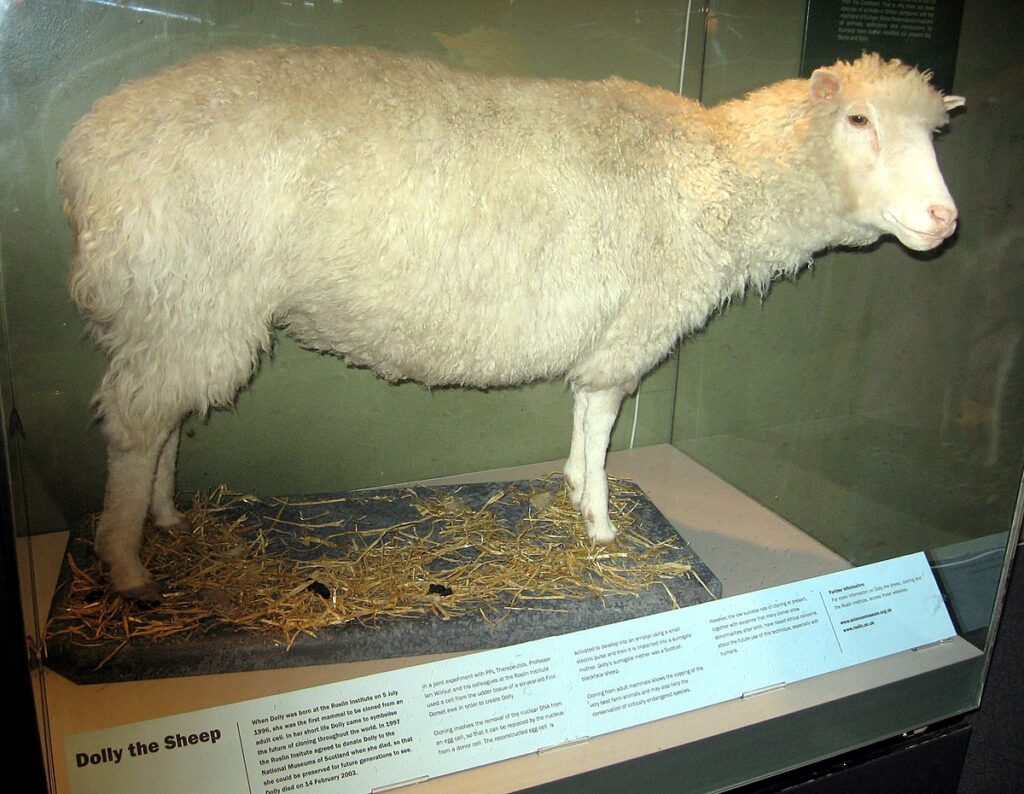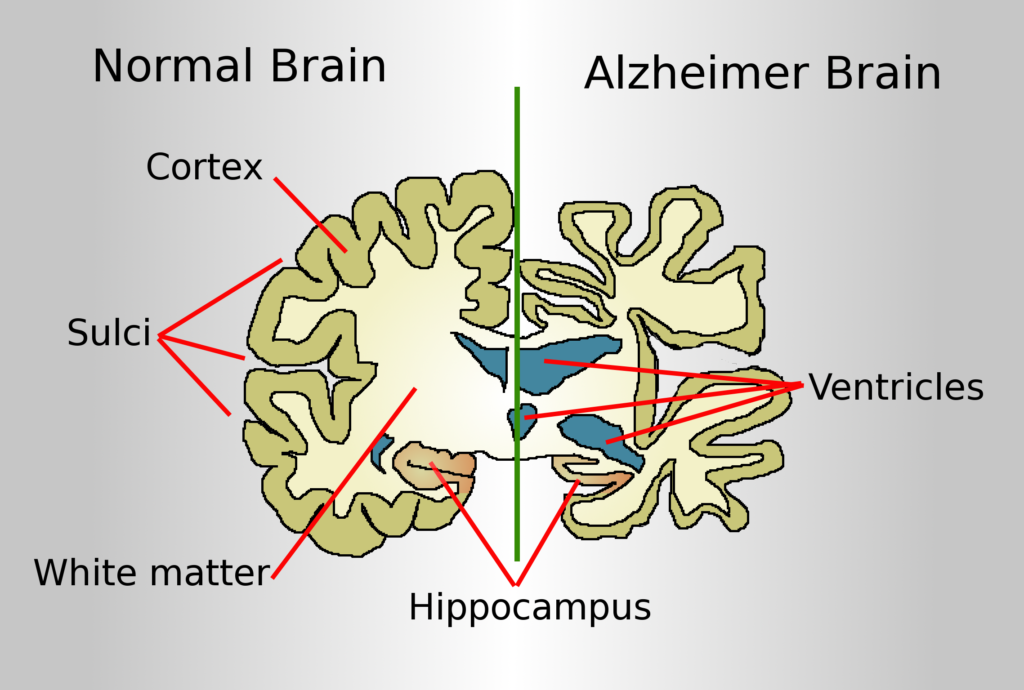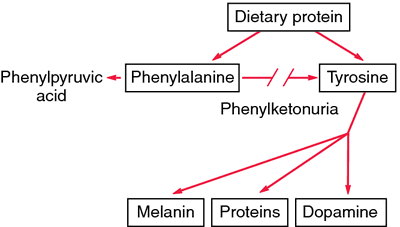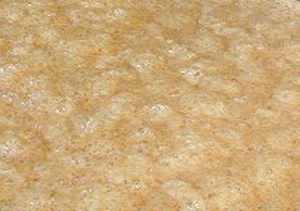Introduction
Animals that have had their DNA manipulated to possess and express an extra (foreign) gene are known as transgenic animals. The genome of their animals has been changed and they can carry genes from other species. Examples of transgenic animals include rats, rabbits, pigs, sheep, cow, monkey and fish although over 95% transgenic animals are mice
How are transgenic animals produced?
DNA microinjection
Retrovirus- mediated gene transfer
Embryonic stem cell mediated gene transfer.
Dolly, Polly, Molly
Polly and Molly (Born 1997), two ewes, were the first mammals to have been successfully cloned from an adult somatic cell and to be transgenic animals at the same time. This is not to be confused with Dolly the sheep which was the first animal (mammal) to be successfully cloned from an adult somatic cell where there was no genetic modification carried out on the adult donor nucleus.

Polly and Molly, like Dolly the sheep, were cloned at the Roslin Institute in Edinburgh Scotland. The first transgenic sheep to produce alpha-1 antitrypsin was Tracy.
Transgenic Monkey:- ANDi was the first genetically modified monkey. The GFP (green fluorescent protein) gene was inserted into the monkey’s chromosome.
.
Why are these transgenic animals being produced?
The two most common reasons are:-
Some transgenic animals are produced for specific economic trait.
Other transgenic animals are produced as disease models (animals genetically manipulated to exhibit disease symptoms so that effective treatment can be studied).
Benefits from transgenic animals can be studied broadly under 3 heads:-
Medicine | Agriculture | Industry |
Cows that produce human protein enriched milk | Larger sheep that grow more wool. | Goats that produce spider silk for materials production. |
.
Madicine:-
(i) Normal physiology and development:- Transgenic animals can be specifically designed to allow the study of how genes are regulated, and how they affect the normal functions of the body and its development, e.g. study of complex factors involved in growth such as insulin-like growth factor. By introducing genes from other species that alter the formation of this factor and studying the biological effects that result, information is obtained about the biological role of the factor in the body.

(ii) Study of disease:- Many transgenic animals are designed to increase our understanding of how genes contribute to the development of disease. These are specially made to serve as models for human diseases so that investigation of new treatments for diseases such as cancer, cystic fibrosis, rheumatoid arthritis and Alzheimer’s disease

(iii) Biological products:- Medicines required to treat certain human diseases can contain biological products, but such products are often expensive to make. Transgenic animals that produce useful biological products can be created by the introduction of the portion of DNA (or genes) which codes for a particular product such as human protein (alpha-1 antitrypsin) used to treat emphysema.
Similar attempts are being made for treatment of phenyketonuria (PKU) and cystic fibrosis. In 1997, the first transgenic cow, Rosie, produced human protein-enriched milk (2.4 grams per litre). The milkcontained the human alpha-lactalbumin and was nutritionally a more balanced produced product for human babies than natural cow-milk.

(iv) Vaccine safety:- Transgenic mice are being developed for use in testing the safety of vaccines before they are used on humans. Transgenic mice are being used to test the safety of the polio vaccine. If successful and found to be reliable, they could replace the use of monkeys to test the safety of batches of the vaccine.
(v) Chemical safety testing:- This is known as toxicity/safety testing. The procedure is the same as that used for testing toxicity of drugs. Transgenic animals are made that carry genes which make them more sensitive to toxic substances than non-transgenic animals. They are then exposed to the toxic substances and the effects studied. Toxicity testing in such animals will allow us to obtain results in less time
Agriculture:-
(i) Breeding:- Farmers have always used selective breeding to produce animals that exhibit desired traits (e.g. increased milk production, high growth rate). Traditional breeding is a time-consuming, difficult task. When technology using molecular biology was developed, it become possible to develop traits in animals in a shorter time and with more precision. In addition, it addition, it offers the farmer an easy way to increase yields.
(ii) Quality:- Transgenic cows exist that produce more milk or milk with less lactose or cholesterol, pigs and cattle that have more meat on them, and sheep that grow more wool. In the past, farmers used growth hormones to spur the development of animals but this technique was problematic, especially since residue of the hormones remained in the animal product.
(iii) Industrial Application:- In 2001, two scientists at Nexia Biotechnologies in Canada splied spider genes into the cells of lactating goats. The goats began to manufacture silk along with their milk and secrete tiny silk strands from their body by the bucketful. By extracting polymer strands from the milk and weaving them into thread, the scientists can create a light, tough, flexible material that could be used in such applications as military uniforms, medical microsutures, and tennis racket strings.
Toxicity-sensitive transgenic animals have been produced for chemical safety testing. Microorganisms have been engineered to produce a wide variety of proteins, which in turn can produce enzymes that can speed up industrial chemical reactions
Other Applications of Biotechnology:-
To improve renewable fuel production
Enhanced or engineered microorganisms for fermentation of ethanol, butanol, other fuels.
Engineered microorganisms or plants to manufacture enzymes used in fuel production.
Improved algal strains for biofuel production.
Selected or engineered plant species with favourable traits for use as improved biofuel feedstocks.

Bioremediation:-
Bioremediation is the use of microorganism metabolism to remove pollutants. Technologies can be generally classified as in situ or ex situ . In situ bioremediation involves treating the contaminated material at the site, While ex situ involves the removal of the contaminated material to be treated elsewhere.
Pseudomonas putida or super bug was developed by A.M Chakravorty and is used for cleaning oil spills.